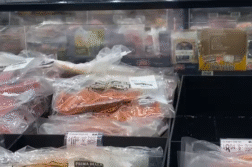ORLANDO, Fla. (Ivanhoe Newswire) — Acetone, formaldehyde, butane, and arsenic are just a handful of the 600 ingredients found in cigarettes. You know smoking is bad for you, but does smoking one a day or ten a day make a difference?
A new study by the National Cancer Institute found that people who smoked on average less than one cigarette per day still had a 64 percent higher risk of early death. But those who smoked up to ten a day had an 87 percent greater risk. Occasional smokers also had nine times higher risk of dying from lung cancer, while regular smokers have 12 times higher risk.
The Center for Disease Control announced tobacco use remains the single largest preventable cause of death and disease in the US today. Cigarette smoke kills over 480,000 Americans each year, with more than 40,000 of those deaths from secondhand exposure. So why are people still smoking?
Medical experts urge that the only safe strategy is not to smoke at all. And there is good news, as soon as we stop smoking our body starts recovering. Within 12 hours of your final cigarette, your blood carbon monoxide levels are much lower, and just one year later your risk of coronary heart disease will be half of what it was as a smoker.
If you quit before age 35, your life expectancy will be similar to someone who has never smoked. There are many different resources out there to help you quit smoking, so don’t give up. Visit Smokefree.gov to get started today.
Contributors to this news report include: Gabriella Battistiol, Producer; Roque Correa, Videographer and Editor.



